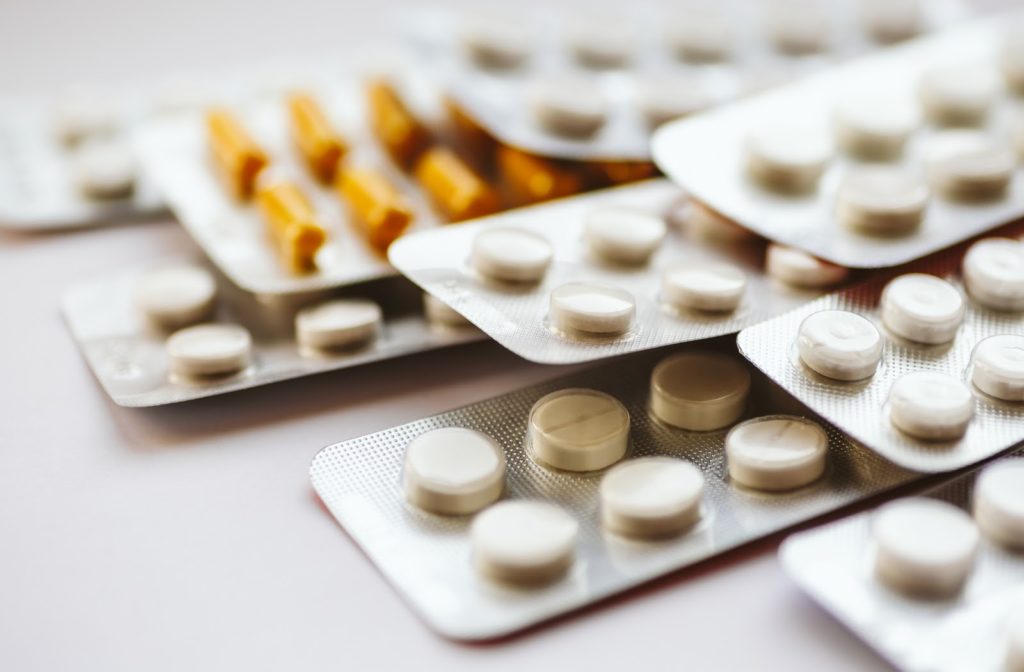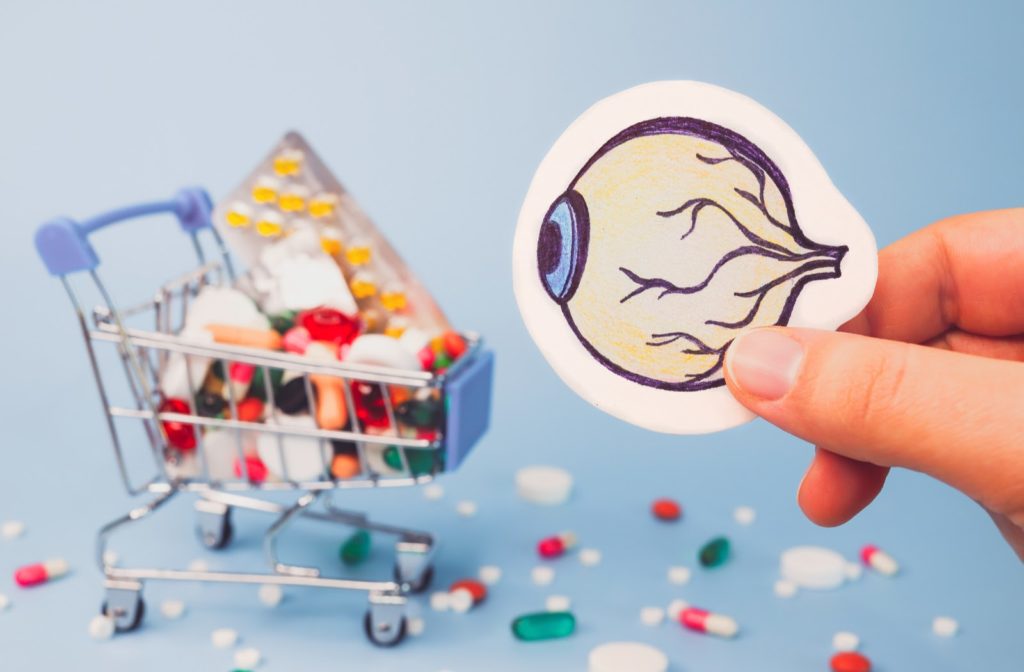Nobody likes dry eyes, but more than 16 million people in the United States have them. What’s more, many different factors can contribute to your risk of developing dry eyes—including a surprising number of medications.
Don’t worry; you don’t have to throw out your entire medicine cabinet! Just learn which medications can increase your risk of dry eyes so that you know the risks and can make informed decisions about what you use. We’re here to help with this list of 10 medications that can cause dry eyes.
Dry Eye Basics: What Is It, and Should You Be Worried?
We’ll be honest: there are plenty of conditions out there that are more severe than having dry eyes. However, that doesn’t mean you want to have dry eyes. At best, dry eyes can be irritating and distracting—and at worst, they can increase your risk for vision-threatening corneal ulcers.
Dry eyes usually develop for one of two main reasons:
- Your eyes’ lacrimal glands stop producing the right amount of tears for the aqueous layer of your tear film
- Your eyelids’ meibomian glands stop producing the oil for the lipid layer that stabilizes your tear film and prevents it from evaporating too quickly
In either case, you can experience a litany of undesirable symptoms, such as:
- Burning, itching, and other types of irritation
- Foreign body sensation
- Redness in or around the eyes
- Blurry vision
What Medications Can Cause Dry Eyes?
Now it’s time to find out which medications can increase your risk of developing dry eyes or exacerbate their symptoms. Here’s our list:
Antidepressants
Several common antidepressants—including SSRIs such as Paxil and trycyclic antidepressants like Adapin—can cause anticholinergic side effects. These effects can disrupt the function of your lacrimal glands and make your eyes produce fewer tears, resulting in dry eyes.
Antihistamines
Antihistamines can control a wide range of allergy symptoms, but they can also diminish the aqueous layer of your tear film, leaving your eyes without moisture. Benadryl and Claritin are two examples of antihistamines that may affect your tear film this way, but even site-specific antihistamines such as Allegra can lead to dry eyes (although this is less likely).
Acne Control
Topical retinoid-antibiotic combination treatments have been linked to significant dry eye symptoms. These treatments include isotretinoin, which is found in the common acne control medication Accutane and its generic counterparts.

Birth Control
It’s well-known that taking birth control medications frequently leads to dry eyes. However, taking oral contraceptives alone does not seem to affect tear osmolarity, which is a key indicator of dry eyes. It is thought that taking birth control while using contact lenses increases the risk of dry eyes in women, possibly because oral contraceptives may increase contact lens intolerance.
Painkillers
Many common painkillers fall under the category of topical Non-Steroid Anti Inflammatory Drugs (or NSAIDs). Since inflammation is a common symptom of dry eyes, you might think that these drugs would reduce your risk of dry eye syndrome—but that isn’t necessarily true. NSAIDs can also make your cornea less sensitive and exacerbate the damage that dry eyes already cause to the epithelial cells on its surface.
Beta Blockers
Beta blockers are an active part of many medications for hypertension and migraines. However, they also weaken the aqueous layer in your tear film and cause ocular irritation, resulting in dry and uncomfortable eyes.
Gastrointestinal Medications
Proton pump inhibitors (PPIs) are often used to reduce stomach acid levels and prevent common gastrointestinal problems like stomach ulcers and acid reflux. However, numerous PPIs can also cause dry eyes as a side effect, including Prevacid and Prilosec.
Antipsychotic Drugs
Phenothiazines are commonly used to medicate people with schizophrenia, but they also decrease aqueous production, which leads to dry eyes. Thorazine, which is now less commonly used for the same purposes, can also have negative impacts on aqueous production.
Hormone Replacements
Menopause Hormone Therapy (MHT) can help prevent long-term estrogen deficiency. However, it also increases your risk of developing dry eye syndrome since estrogen affects the course of inflammation in the human body. Interestingly, the same research shows that MHT can reduce your risk of developing cataracts and glaucoma.
Chemotherapy Medications
Dry eyes are a common side effect of cyclophosphamide, which is frequently used for chemotherapy under the name Cytoxan.
Know the Risk and Protect Your Eyes
Ultimately, deciding to take any of the medications listed above is your choice—and in specific situations, the pros may outweigh the cons. However, you deserve to know whether the medication you’ve been recommended or prescribed can cause dry eyes so that you can decide for yourself whether to take it or seek an alternative. For more information on dealing with dry eyes, contact us and speak with one of our team members today.


